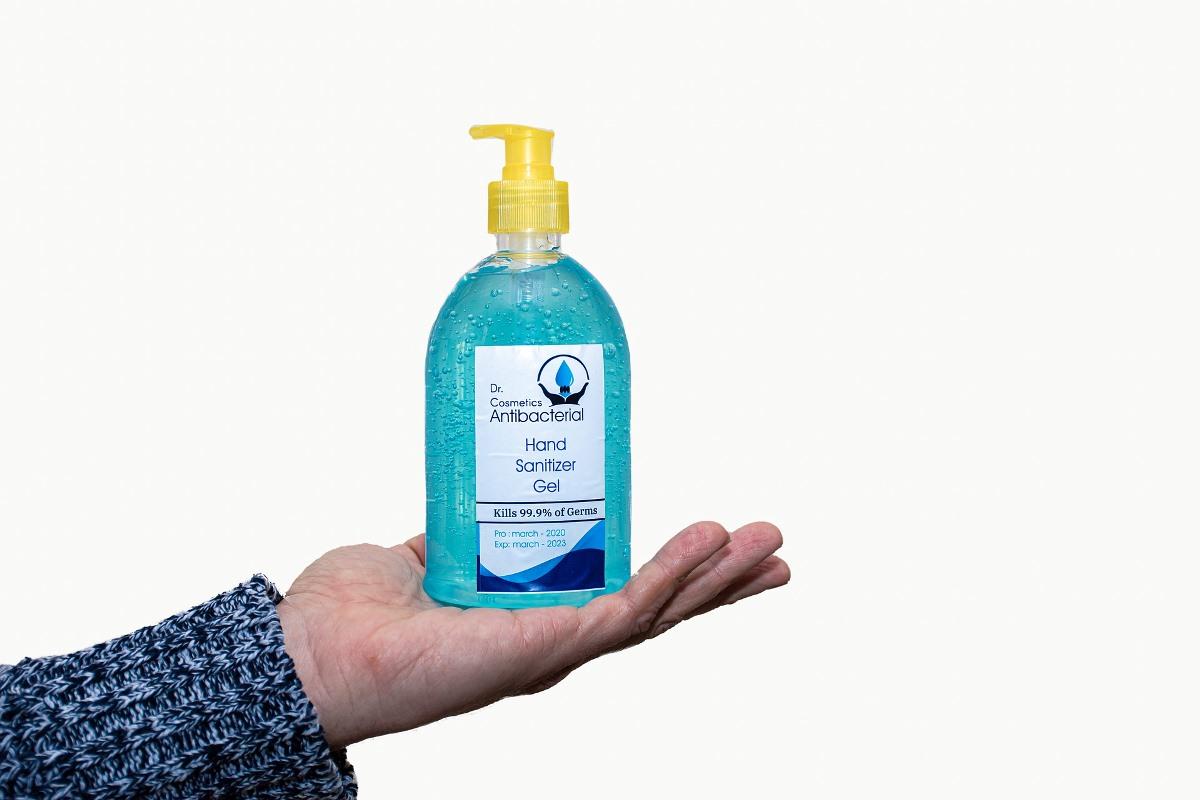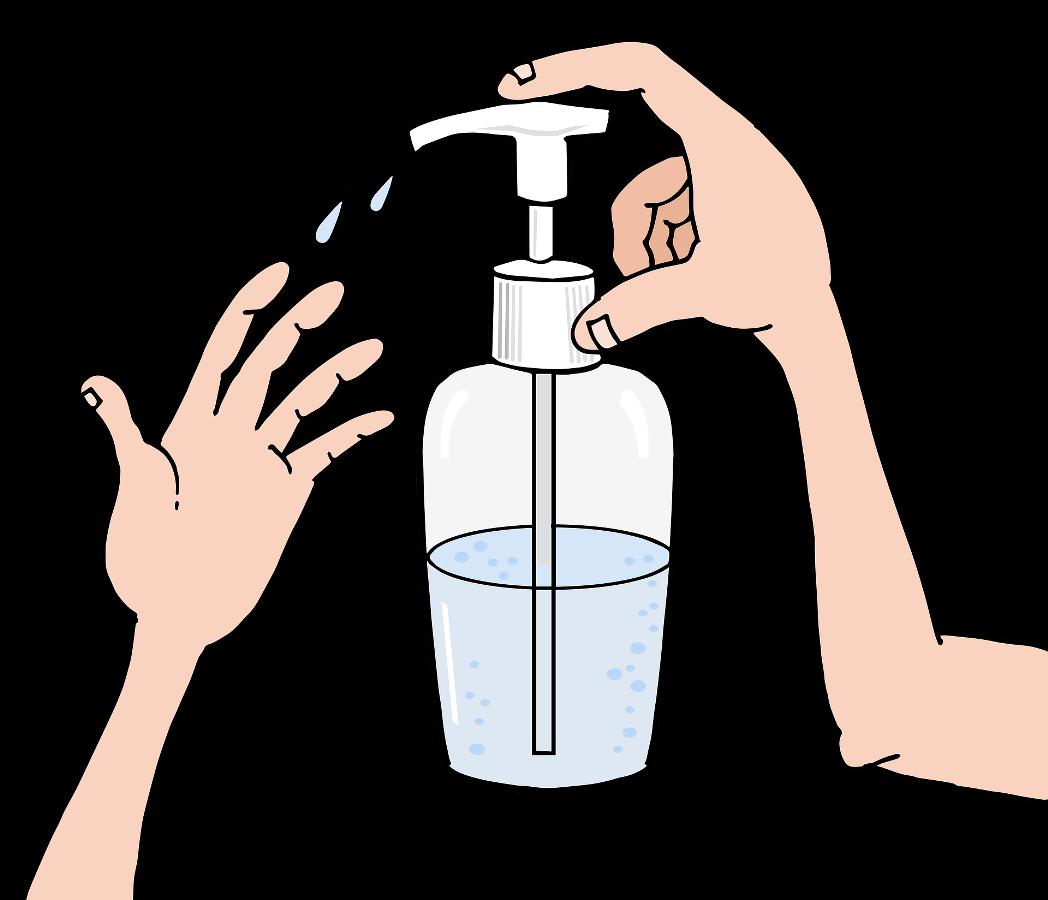Hand Sanitizer Project Report – Making Business Plan
Introduction
Hello friends, today we are here with a new topic of hand sanitizer project report and making business plan in India. Hand sanitizer referred to as hand antiseptic is rubbed to the hands for removing the microbes present on our hands. Hand hygiene is one of the most significant measures to avoid the spread of infectious diseases.
Hand sanitizer use is suggested when soap and water are not accessible for hand washing or when repeated hand washing is not possible. Although the effectiveness of hand sanitizer is not constant, it is used as a simple means of infection control in wider areas such as day-care centers, hospitals, schools, health care clinics, and supermarkets. As a result of increased awareness about hand hygiene and its aids, there has been a constant rise in demand for hand sanitizers. This article will elaborate on the production of alcohol-based liquid hand sanitizer.
A step-by-step guide to Hand Sanitizer Project Report

Market potential for Hand Sanitizer Making Business
India’s hand sanitizer market is projected to cross $ 43 million by the year 2025. The growth of the hand sanitizer market in India is because of the rising awareness about healthy lifestyle & wellness, change of consumer preference towards convenient hygiene items. Besides, the varied marketing activities by leading companies, in addition to huge requirements, are some other reasons for the growth of the hand sanitizer market in India. Moreover, the COVID-19 outbreak has endorsed the demand for sanitizers like never before in all countries.
The hand sanitizer market is available as Gel, Foam, Liquid, and Spray. West India dominated the country’s hand sanitizer market in 2019, and the region is predicted to sustain its dominance during the next years. Some of the major leaders of the hand sanitizer market in India are Dabur India Ltd., Reckitt Benckiser (India) Ltd., Hindustan Unilever Ltd., Himalaya Drug Company Pvt. Ltd., ITC Ltd., and others.
Types of Hand Sanitizers
Based on the active ingredient used, hand sanitizers can be categorized into two types: alcohol-based or alcohol-free. Alcohol-based sanitizers are commonly ranged between 60 – 95 percent alcohol, basically in the form of ethanol and isopropanol. At those concentrations, alcohol immediately denatures proteins, efficiently neutralizing some types of pathogens. Alcohol-free products are generally based on disinfectants, such as benzalkonium chloride (BAC), or antimicrobial elements, such as triclosan. The activity of disinfectants and antimicrobial agents is persistent and rapid. Many hand sanitizers also include emollients (e.g., glycerine) that moisturize the skin, thickening agents and imparts scent.
License, registration, and permissions required to start Hand Sanitizer Making Business in India
For initiating a hand sanitizer production plant, it is necessary to get several licenses and registration from various Government authorities of the state your plan to begin.
1. UAM Registration (udyogaadhaar.gov.in)
2. Company Registration with ROC
3. Trade License
4. Factory License
5. Drugs & Cosmetics License
6. BIS Certification
7. Fire License
8. ISI standard registration
9. MSME registration
10. Shop and Establishment Act permission
Raw material required to start Sanitizer Making Business
The chief raw materials needed for the preparation of hand sanitizer are Ethanol or Isopropanol, Hydrogen Peroxide, Glycerol, distilled water, and essential oil such as peppermint or lavender oil or lemon extract. All the mentioned raw materials are easily available in local stores.
Machinery required to set up Hand Sanitizer Production Unit
Choose a proper location for factory operation is an essential aspect. Major facilities needed are water and power supply. Easy availability of transport provision and staff is vital. Create a floor plan allocating specific space for raw material storage, finished items storage, production area, administrative purposes, storeroom, and area for miscellaneous usage. Usually, you will require 2000 sq. ft of non-agricultural land for setting up an improved sanitizer manufacturing unit. Here, you can keep a plant (1000 sq. ft) having a processing capacity of 240 kiloliters/annum. Besides, the land should have a proper elevation.
You may also check this: How To Invest In Share Market.
Hand sanitizer manufacturing plant equipment must have the following inclusions:
1. Raw material / Alcohol Storage Vessel (Suggested only if you are planning to go for big size Manufacturing plant example, 500 liters and more)
2. Transfer Pump is needed to pour alcohol into manufacturing vessel
3. Manufacturing/ mixing vessel
4. Product storage vessel
5. Transfer Pumps (2 in number – One to transfer sanitizer from manufacturing vessel to a storage container. Another vessel and one from the storage vessel to filling machine)
6. Filling line consisting of filling machine, labeling machine, capping machine, and inkjet printer for batch coding.
7. Working platform, control panels, valves, essential pipes, and filters
8. Weighing balance
Production methods in Hand Sanitizer Making Business
The first stage in preparing hand sanitizer is to finish the batch size. In this step, it is estimated that the production capacity to be installed is 500 L with a proper working volume of 400 L, and all the financial operations presented in this report that is dependent on raw materials.
1. In a 500 L stainless steel jacketed vessel pour about 333.3 L of Ethanol. Using the jacket control, the temperature of the set-up is maintained below 20 °C.
2. Start the mechanical stirrer. This includes 16.7 L hydrogen peroxide.
3. To the above container add 5.8 L glycerol.
4. Add 41 L of distilled water and keep stirring for 30 mins to ensure uniform mixing by keeping the batch temperature at less than 20 °C throughout the process.
5. Finally add 3.2 L of essential oil (Eucalyptus, clove, peppermint, or citrus oil) for scent and keep stirring for half an hour.
Alcohol storage tanks should be around10 times the capacity of the manufacturing vessel so that, about 10 batches could be catered before refilling the alcohol storage tank. For making sanitizer in gel form, add Carbopol which will thicken the sanitizer into gel form. Permitted color & perfume may be included as per requirement. The homogenizer will mix the Carbopol into alcohol and water to get a uniform liquid. Then once the sanitizer is ready transfer the storage vessel and takes it for filling.
For small quantity preparation, the tanks must be calibrated for the ethanol/isopropyl alcohol volumes, and the final volumes of either 10 or 50 liters and take care vessels are used properly.
- 10-litre preparations: glass or plastic bottles with screw-threaded stoppers are preferred.
- 50-litre preparations: large plastic (if possible polypropylene, translucent enough to view the liquid quantity) or stainless-steel tanks with an 80 to100 liter quantity should be used to allow for mixing to avoid the overflow.
Hand Sanitizer Project Report/Financial aspects for Hand Sanitizer Making Business
In case if you miss this: Online Earning Sites In India.

Build up Area Rs. 15000
Machinery & Equipment
Alcohol Storage vessel –SS (5000 L) Rs. 1,50,000/- Transfer pump Rs. 75,000/-
Manufacturing vessel-SS Rs. 1,00,000/-
Storage vessel-SS (500 L) Rs. 15,000/-
Filling line (filling machine, capping machine, labeling machine & ink jet printer for batch coding) Rs. 6,40,000/-
Batch flow controller/ flow meter Rs. 1,50,000/-
Electronic Weighing Scale Rs. 20,000/-
Misc. equipment & Tools such as can sealing machine, box stamping machine Rs. 50,000
Electric Meter, Starter, Switch, etc. Rs. 70,000
Electrification, Installation, Packaging, Taxes Forwarding charges etc. Rs. 2,54,000
Office furniture & fixtures Rs. 1,27,000
Preliminary & pre-operative expenses Rs. 1,27,000
Total Fixed Investment Rs. 17,78,000.
Working Capital
Manager Rs. 35,000
Accountant/ Store-keeper Rs. 25,000
Process & Analytical Chemist Rs. 40,000
Unskilled worker Rs. 24,000
Total Rs. 1,24,000
Prequisites @10% Rs. 12,400
Total Wages Rs. 1,36,000.
Raw material including packaging materials
Alcohol Rs. 8,70,000
Glycerol Rs. 17,000
Hydrogen peroxide Rs. 40,000
Distilled water Rs. 25,000
Fragrance Rs. 2,60,000
packaging bottles Rs. 4,00,000
Total Rs. 16,12,000
Other contingent expenses Rs. 25,000.
Recurring Expenses
Personnel Rs. 1,36,000
Raw material Rs. 16,12,000
Utilities Rs. 15,000
Other Expenses Rs. 25,000
Total Rs. 17,88,000
Working capital for 3 months Rs. 53,64,000.
Total Cost of the Project
Fixed Investment + Working Capital for 3 months = Rs. 17,78,000 + Rs. 53,64,000 = Rs. 71,42,000.
Financial Analysis
Total recurring expenditure Rs. 2,14,56,000
Depreciation on machinery & equipment Rs. 1,79,000
Depreciation on Office Furniture & Fixtures Rs. 25,000
Interest on total capital investment Rs. 2,13,000
Total Rs. 2,18,70,000
Net Sales per annum Rs. 7,15,00,000
Net Profit Per Annum Rs. 4,78,50,000.
Net Profit ratio on Sales
Profit/ annum X100/ Sale per annum = 478.5X100/715 = 66.92%.
Rate of return
Profit/ annum X100/Total Capital investment = 478.5X100/17.78 = 2691%.
Fixed Cost / Annum
(Rent) + (Depreciations & Amortization) + (40 % of salaries & wedges)+ (40 % of utilities & other expenses excluding rent) + Interest on capital investment = 1.8L + 1.79L + 0.25L + 6.52L + 1.2L + 2.13L = 13.69 lakhs.
Breakeven point
Fixed cost per annum X100/Fixed cost per annum + Net Profit per annum = 13.69X100/(13.69+478.5) = 2.78%.
- Handicraft Making at Home: A Small Profitable Business Idea
- Pet-Tech Startups: Innovations for Animal Lovers
- Tech Repair Services: Meeting the Demand for Gadget Maintenance
- Maximizing Rewards: Smart Credit Card Habits for Cashback and Points
- Ultimate Guide to Making Money from Goat Milk Business
- How to Start an Agricultural Value Added Product Business
- Value-Added Business Ideas for Greenhouse: The Best Ways to Make Profits with Greenhouse Farming
- How to Make Profits with Organic Country Chicken: Best Strategies for Beginners
- 10 Value-added Business Ideas for Millets: Low-investment and Highly Profitable
- Why Cleaning Service Business Becoming More Profitable in Metro Cities in India
- 10 Best Businesses to Start in Ayodhya for Profits
- Top Drone Business Ideas in India: Unlocking Aerial Innovation & Opportunities
- Top 10 Service Businesses You Can Start with No Money
- Ultimate Guide to Starting a Home-Based Advertising Agency Business
- Starting a Nail Salon Near Your Location: Check List, Business Plan, Licensing, and Opening Instructions
- Construction Company Name Ideas: Guide to Create New Construction Company Names
- 8 Best Small Businesses to Start in Hyderabad: Low-Cost and Profitable
- 10 Best Small Businesses to Start in Massachusetts: Low-Cost and Profitable
- 10 Best Small Businesses to Start in Maryland: Low-Investment and Profitable
- 10 Best Small Businesses to Start in Delaware: Low-Investment and Profitable
- 10 Best Small Businesses to Start in Connecticut: Low-Investment and Profitable
- Top 10 Best Online Pet Business Ideas: Exploring Cats to Dogs
- 10 Best Small Businesses to Start in Colorado: Low-Investment and Profitable
- Top 10 Profitable Small Business Ideas in California: Low-Investment Tips
- From Little Rock to Fayetteville: Top 10 Profitable Small Business Ideas in Arkansas
- Top 10 Profitable Small Business Ideas in Alabama: Discover Opportunities in Alabama’s Growing Cities
- Top 10 Profitable Small Business Ideas in Arizona: Discover Opportunities in Arizona’s Growing Cities
Hello Jagdish,
I am planning to set up a hand sanitizer plant in Sydney, can you please help me with the project report , etc